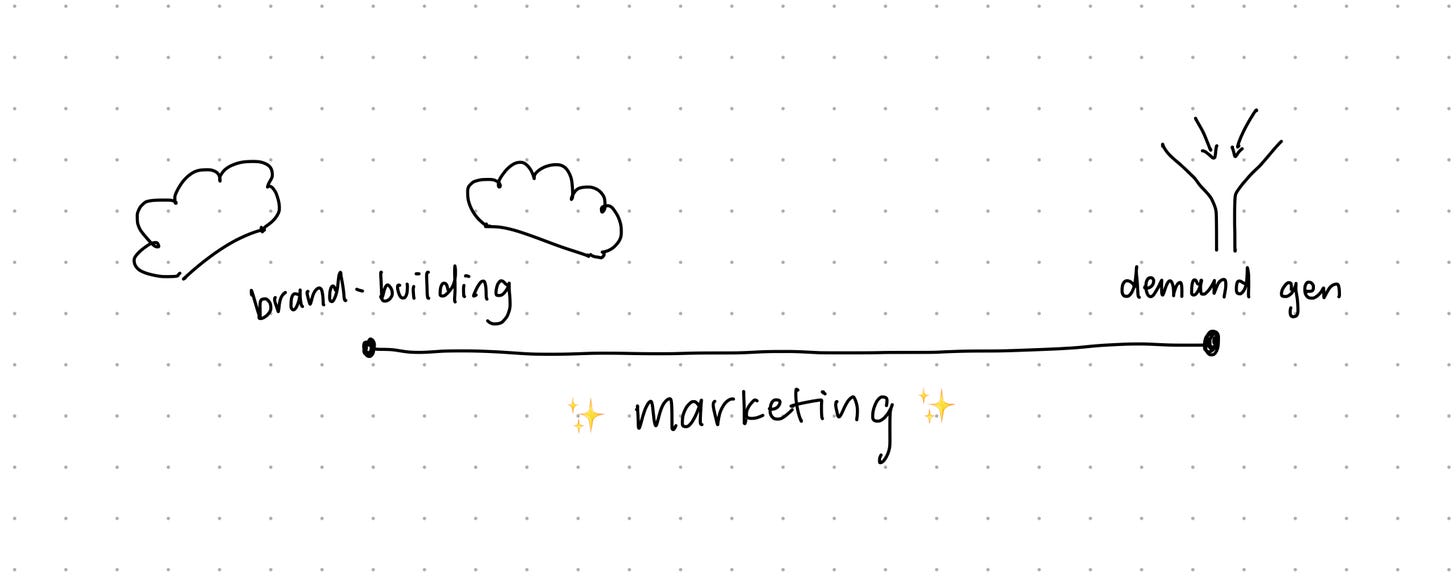TCC #66 — It's pivot time for climate tech
Most of today's climate tech startups won't be here in five years' time. Will you?
Hi folks,
The last few editions of The Climate Communicator have focused on what the world of climate tech and sustainability will be facing over the next few years, particularly under an administration that is openly hostile towards climate solutions. Clean air? Cooler planet? Gross!
Today I’m continuing in that theme, because, quite honestly, it’s hard to think about much else right now. So today I’m thinking about what I’d do if I was a founder or CMO at a climate tech startup — how I’d be thinking about the next few years.
This is not an easy topic to generalise about. Climate tech is a big messy grouping of verticals and solutions that often have very little in common. One day we probably won’t be talking about climate tech, but for now, it’s all we’ve got. And even though climate tech is so varied, many companies are finding themselves in similar situations right now — funding dwindling by the day, raises getting more difficult, talent churning frequently, product-market fit still seemingly elusive, the future (and present) looking more uncertain than ever.
If I were in-house at a climate tech startup in 2025, here’s what I’d be thinking about:
1 — Money
Where’s the money? Rewind just two or three years ago and many of the climate tech companies around today were flush with cash from big initial raises. That’s not the case anymore. The number of climate-specific investment funds has dried up, total funding is still down, and many of your competitors delayed their next rounds last year but will now need to raise or fold (many by the end of this year). So demand for VC funding is high, but supply is low.
I’ve never been a big fan of the VC model anyway, so if I was a founder, I’d be ramping up efforts to secure longer contracts with bigger, enterprise-level clients to get some more sustainable revenue through the door. I’d be doing this even if I were gearing up for a Series B or C, because based on what we’re seeing at the moment, VC raises seem to be getting smaller. That said, it’s a tough time to be bringing in big clients, too (more on that below).
More creative founders might pursue an alternative capital stack. I don’t have much experience here, but CTVC recently did an insightful exploration into it, and in this climate, I’d certainly be keeping an open mind.
2 — Product-market fit
By now, most founders, product managers, and even marketers in this space have realized that the perfect, permanent climate tech product can’t exist yet — it’s simply too early. If the American dream is a house with a white picket fence, the startup dream is product market fit (that and, of course, world domination). Both of these myths perpetuate the illusion that the end state is static: that life inside the McMansion is always perfect; that the weeds will never grow back in the front yard; that at some point your product team will stumble on a combination of features and messaging that perfectly suits your target market and will remain perfect forever.
Not so, and especially not so in the world of B2B sustainability today. It is too early for any climate tech company to declare they’ve found product-market fit. Instead, think about what changes you’ll have to continually make in order to keep up with, or stay ahead of, a constantly changing market. You want to be thinking about a 10-year vision for PMF (where are things going in the longer term?) and remaining aware of that future vision, while being extremely pratical and realistic about what the next 12-18 months looks like fo ryour target audience, and shipping quickly to get something in their hands that will help them through it.
Your 12-month PMF and your 10-year PMF may look drastically different, but that’s the only way to survive here. If you put all your resources into solving the market’s short-term needs, you might not have enough left in the tank for a harried ‘pivot’ when you realize the market has left you behind. If you go all in on a 10-year vision, you’ll get very little tractino in the short term, and there’s a good chance you’ll be wrong about what the market looks like in 10 years, anyway.
3 — Sales, sales, sales
The goal of marketing is to balance awareness/long-term brand building with short-term demand generation. We can think of these activities as sitting on a spectrum, with brand-building on the fluffy, less quantifiable end, and demand gen on the no-nonsense side. In tough times, swing to the hard end of the spectrum. This is bread-and-broth marketing. Survival marketing. It’s not a long-term strategy, but it can help you cut costs in the short term.
Reporting
Survival marketing has no time for vanity metrics. Get your reporting sorted (most companies in our space are still struggling with this). If you can easily keep track of your core marketing metrics (we like to distinguish between vanity metrics and VIP metrics) at a weekly or monthly glance, you’ll have a huge advantage over your competitors. You need a solid handle on your marketing scorecard if your primary goal is to increase customer revenue, but you also need it if you’re raising funding, so…. get it done. (If you outsource it, make sure it’s set up in a way that works for you, that you’ll actually use, and that you have full digital ownership of.)
Content
Survival marketing starts at the bottom of funnel, where it’s a) far more expensive to lose someone, and b) far easier to make small tweaks that lead to big conversion rate gains. From a content perspective, this means sales enablement content that answers key objectives and explains the product in an accessible and compelling way. It means shareable content assets that can be passed up the chain of command and reassures both the person doing the product research and due diligence and the person signing off on it.
Rather than content that speaks to a broad vision or high-volume keywords (e.g. how to achieve net zero), drill down tighter — focus on detailed case studies and how-to guides.
Paid ads
Meg and I are bullish on organic content, but we also like to see climate tech companies making use of paid channels to drive short-term demand. In times like these, your paid strategy can become even more important. We recommend a paid ads strategy that combines BOF/high-intent searches with TOF pathways that lead to downloadable content and tools. This means you get a constant stream of MQLs and SQLs into your pipeline.
For those working on products with global potential, the uncertainty in the US right might be a chance for you to explore less saturated (and therefore less expensive) geographic markets for your paid ads.
***
Alright, that’s it from me today. Hit reply and let me know if you’re currently pivoting or strategising about the next few years. I’d love to hear more of your takes on the current market.





You had me at "pivot." It's one of those magic words in climate marketing that conveys a whole strategic approach necessary to respond to climate change. "Resilience" is another.